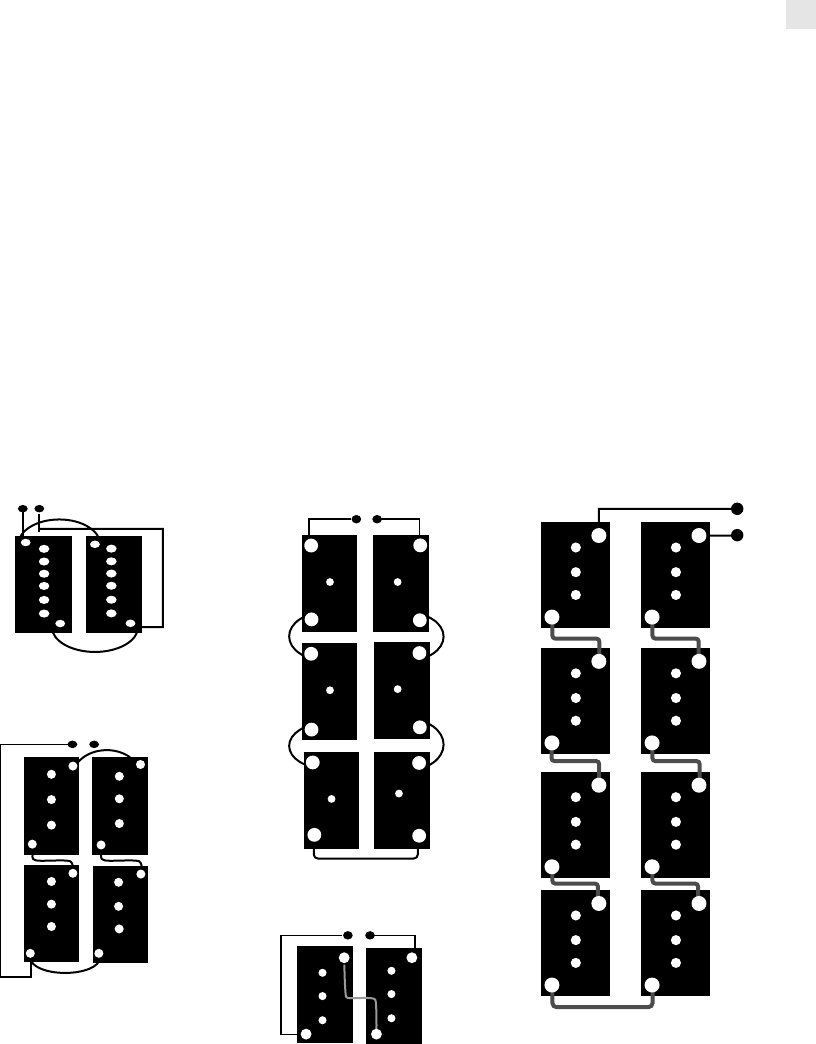
All batteries have positive and negative polarity. Those charges have to be
handled appropriately. Test for polarity three times before you close the switch to
protect yourself, the battery, and the owner’s life and property.
When a battery has expended its service life, it needs to be disposed of prop-
erly. We will discuss battery disposal and recycling later.
Wiring a Battery Bank
Several batteries put together make up what is known as a battery bank or array.
Joining those batteries together requires information on the needed voltage,
current, and amp-hours. Voltage will most likely be 12V, 24V, or 48V. The number
of strings that meets the amp-hours needed and the number of batteries per
string that satisfy voltage parameters will determine the exact number of separate
batteries needed to complete the battery bank.
Exact # batteries in bank = (# series strings) × (# batteries per string)
FIGURE 6-2 12V battery configuration
+
-
+
6VDC
+
+
-
-
-
-
+
-
+
+
+
6VDC
12
VDC
12-VOLT CONFIGURATION
with 12-volt batteries in parallel
12-VOLT CONFIGURATION
with 6-volt batteries in series parallel
12-VOLT BATTERY CONFIGURATIONS
12-VOLT CONFIGURATION
with 6-volt batteries in series
12-VOLT CONFIGURATION
with 2-volt batteries in series
12
VDC
2VDC
+
2VDC 2VDC
-
+
2VDC 2VDC
-
-
+
+
2VDC
-
-
6VDC
-
-
+
+
6VDC
+
6VDC
+
-
6VDC
+
-
-
-
+
-
FIGURE 6-3 48V battery configuration
+
6VDC
-
+
6VDC
-
+
6VDC
-
+
6VDC
-
-
6VDC
+
-
+
-
6VDC
+
-
6VDC
+
-
6VDC
+
48-VOLT BATTERY CONFIGURATION
CHAPTER 6 Standalone PV Systems 119
..................Content has been hidden....................
You can't read the all page of ebook, please click here login for view all page.
